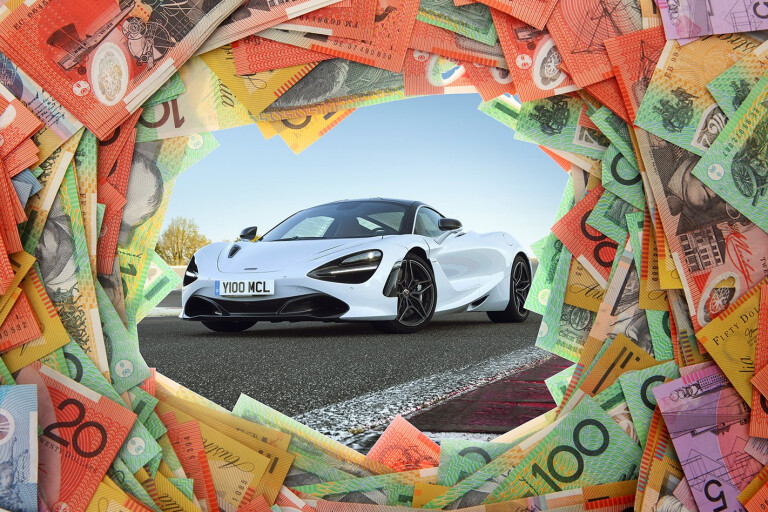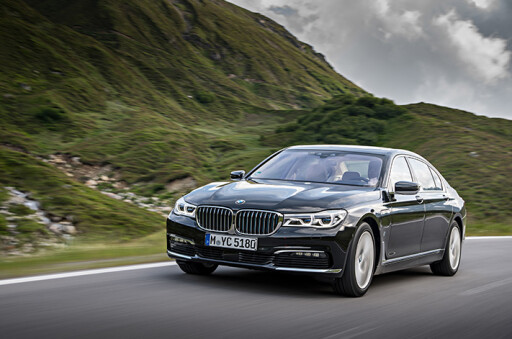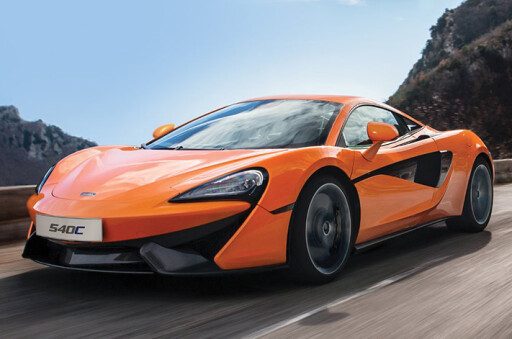
YOU’RE about to sign the bottom line for your new luxury car, and all of a sudden someone you don’t know comes up, grabs your wallet or purse, and rifles through it.
Moments later, your bank account is missing tens of thousands of dollars, and you have no idea where it has gone or what it will be spent on. Welcome to the luxury car tax.
Since the introduction of the Goods and Services Tax in 2000, the tax has been a constant irritation to cashed-up new-car buyers looking to reward themselves.
LCT is the government’s gift that keeps on giving; it can change every year, it’s levied on cars you wouldn’t consider luxury, and dates back to the protectionist mentality that was supposed to keep Ford and Holden building locally designed and developed Fairlanes and Caprices.

Wheels hates it, as it does anything that makes buying a new car more expensive. So, now that it’s here, can we get rid of it?
Let’s start with a history lesson. Decades ago, when real news was served up on dead trees and inboxes were made of plastic, there was a running joke in the media every time a new Federal Budget was rolled out.
It’s the headline “Beer, cigs up”, a phrase that beautifully captured the Australian psyche – and the revenue-heavy focus of the Australian government – of the time.
The joke behind that headline stems from every time a new Budget was presented before parliament, the two groups that always suffered the most seemed to be beer drinkers and smokers. And there’s a reason for that.

It’s because both had an excise duty on them – a sort of consumption tax that, in theory, was levied to account for the social cost of alcohol and tobacco on everything from road trauma to doctors’ waiting rooms. Our vices, therefore, raise the money to pay for the damage they cause.
But here’s the nub: every time excise on alcohol or tobacco rose, so did excise revenue. Beer drinkers would grumble into their glass and smokers would sneer when they butted out their last durrie, but they’d continue to booze on and puff up at the same rate, despite the extra cost and all to the government’s benefit.
It’s a similar thing with our fuel excise. Few will be aware that as of 2014, every six months the Federal Government will sit down, run the numbers over the economy’s performance, and use the result to adjust the rate of fuel excise we pay for at the pump, on top of GST. Fuel prices go up and we might furrow our brow and catch the train a bit more, but slip in an excise adjustment and no one notices.
And just like beer, cigarettes and petrol, the luxury car tax – which we should add is levied on a commodity that carries no more social ills than a cheap car, and isn’t applied to other luxury goods including champagne, yachts or gold watches – is the gift that keeps on giving.

The tax will add about $8200 to the cost of a $100,000 car if it uses more than 7.0L/100km, but if your new ride uses 7.0L/100km or less, it adds about $5600. Double the cost of your car to $200,000 and all of a sudden you’re paying $31,000 in LCT, or $28,000 if it slips under the fuel use cap.
Let’s jump back in time again to the 2008-09 global financial crisis. Even in the most dire part of the economic meltdown, new car sales fell 7.4 percent overall. But some corners of the showroom did better than others.
The numbers showed something of a bloodbath for mainstream passenger cars as mum and dad sales plunged. But for some reason, sports cars costing more than $80,000 ended the year in positive territory after leaping almost a staggering 50 percent in December alone.
Yes, sales across both mainstream and luxury cars both fell, but mum and dad buyers retreated from the market at a much faster and higher rate than luxury buyers, whose numbers dipped rather than fell.
By the end of 2010, sports cars costing more than $200,000 ended the year up almost 25 percent, while large luxury car sales ended December with a 160.5 percent leap – that’s no typo – compared with the same month in 2009.
Jump to today, and our civic leaders see no sign of our appetite for luxury motoring abating. “LCT receipts are forecast to grow by 7.9 per cent in 2016-17, consistent with strong sales of vehicles subject to LCT,” the government crowed in the Budget papers released last night.

“Since the 2016-17 MYEFO, forecast LCT receipts are unchanged over the four years to 2019-20.” That includes a $240 million windfall after the government revised its figures last year to account for an unexpected uptick in luxury car sales.
Luxury cars, then, appear to be something of a recession-proof commodity. Sure, if the economy goes down, the tax will dip slightly, but history shows us it will not by as much as mainstream passenger cars. It’s a bloody good little earner.
The tax is expected to raise about $650 million next financial year, up around $10 million on mid-year forecasts made late last year. A softer start to 2017’s new-car market appears to have the government slightly spooked, with a prediction of just a $640 million return for the 2018-19 financial year.
From then on, though, it’s back to boom times; figures of $690 million and $710 million sum up the government’s most forward-looking estimates – a rise of more than 9.0 percent over where we are now. That’s a better return than money in the bank.
Since its introduction in 2000, the tax has already earned the government’s coffers more than $6.2 billion dollars. By the end of the 2020-21 financial year, the government is counting on that figure to balloon to just shy of $9.0 billion.
And that’s nine billion reasons why it’s here to stay.

COMMENTS